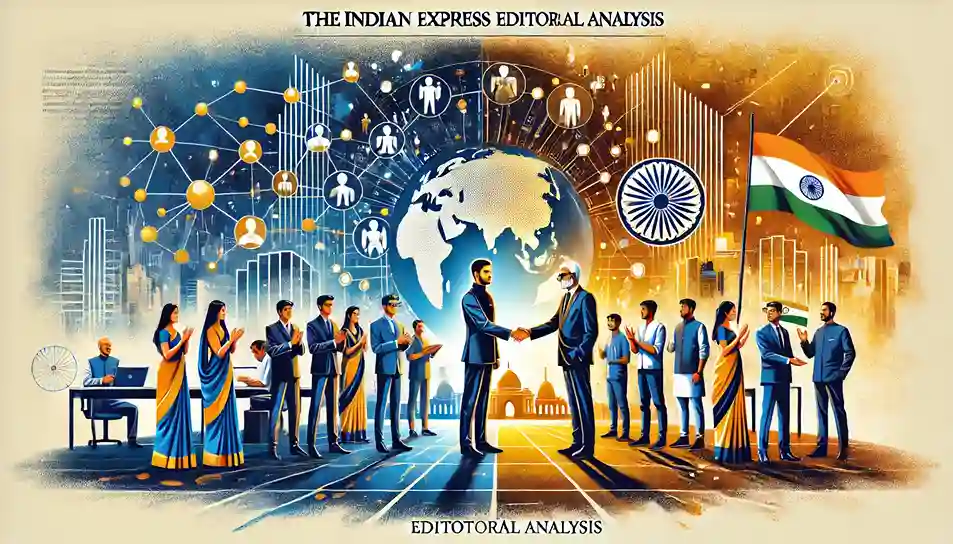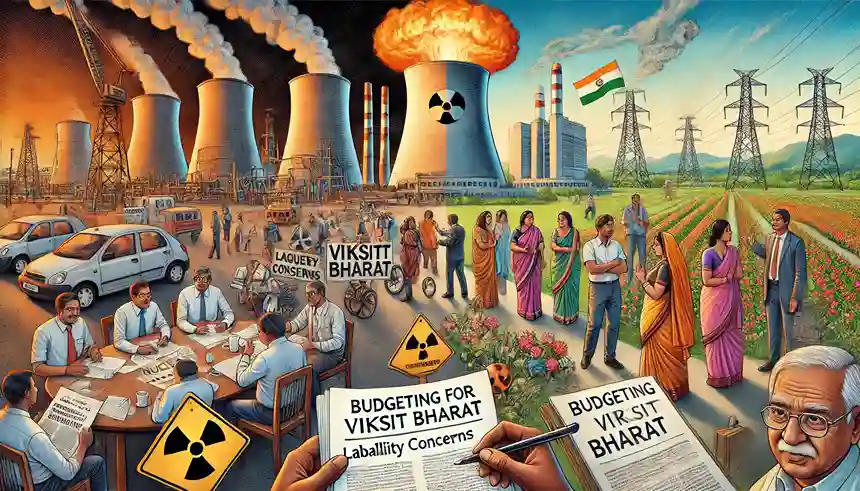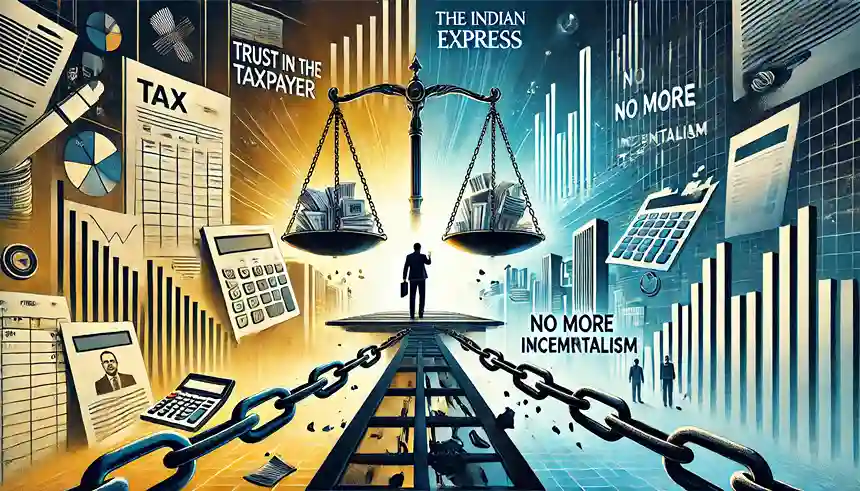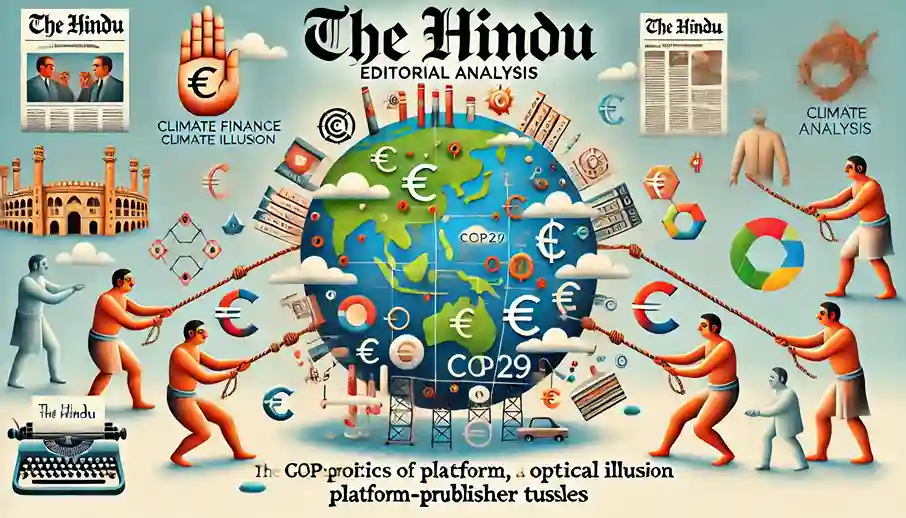Analysis of Indian Express Editorial 1: Plugging the Global Skill Gap
Introduction: Addressing the Global Skills Shortage
In an era where the global economy is rapidly evolving, one pressing issue that stands out is the growing gap in skilled labor, particularly in Western Europe, Japan, and other developed nations. With aging populations on the rise and a declining workforce, these countries face a massive skills shortage. Meanwhile, India, with its young and dynamic workforce, is uniquely positioned to help meet this demand while improving the livelihoods of millions. Circular migration could provide a solution, creating opportunities for skilled workers to gain experience abroad and return home with enhanced capabilities, ultimately benefiting both the destination countries and India.
Brain Drain and India’s Struggle
The Brain Drain Dilemma:
For decades, India has grappled with the phenomenon of brain drain, wherein highly qualified professionals, particularly doctors and engineers, migrate permanently to developed nations. Prior to 2000, many of these professionals had been educated in subsidized institutions funded by Indian taxpayers. Once settled abroad, their contributions to India dwindled, both in terms of remittances and talent.
Surprisingly, remittances from high-income Indian professionals in the U.S., U.K., Canada, and Australia account for just 32% of India’s total remittances. In contrast, manual laborers working in the Gulf contribute nearly 40%. This raises a fundamental question: Can a more strategic form of migration, like circular migration, better serve both the Indian economy and its global partners?
Human Migration: A Historical Perspective
Escaping Poverty Through Migration:
Throughout history, migration has shaped civilizations and economies. For example, Europeans migrated to the Americas and Australia, escaping poverty and discovering new opportunities. Similarly, China expanded westward, creating new frontiers. In contrast, India, geographically bound by the Himalayas and oceans, developed by welcoming outsiders rather than colonizing other lands. This historical context of migration highlights its transformative power and relevance today, particularly as the world faces a critical skills gap.
Present-Day Migration and Its Limited Impact
Currently, only a small fraction of the 12 million new Indian workers entering the labor market annually migrate to developed countries. The migration of highly skilled professionals has made little impact on job availability or poverty levels in India. However, the opportunity to significantly change this narrative exists in the form of circular migration, which has the potential to uplift large sections of the Indian workforce.
- [PDF] “Arihant Computer Awareness Book 1” – Free Download
![[PDF] Arihant Computer Book.pdf” – Free Download for Competitive Exams](https://savepdf.in/wp-content/uploads/2025/04/PDF-Arihant-Computer-Book.pdf-–-Free-Download-for-Competitive-Exams-1040x650.webp)
- [PDF] The Pragmatic Programmer by David Thomas and Andrew Hunt

- [PDF] Structure and Interpretation of Computer Programs
![[PDF] Structure and Interpretation of Computer Programs](https://savepdf.in/wp-content/uploads/2024/12/PDF-Structure-and-Interpretation-of-Computer-Programs-1157x650.webp)
- [PDF] Computer Fundamentals by Anita Goel – Free Download
![[PDF] Computer Fundamentals by Anita Goel – Free Download](https://savepdf.in/wp-content/uploads/2024/11/Computer-FundameComputer-Fundamentals-by-Anita-GoelComputer-Fundamentals-by-Anita-Goelntals-by-Anita-Goel-1156x650.png)
- [PDF] – Mainframe Systems Programming: An Introduction – Download Now
![Mainframe Systems Programming: An Introduction – [PDF]](https://savepdf.in/wp-content/uploads/2024/10/PDF-–-Mainframe-Systems_20241004_162243_0000-1156x650.webp)
The Opportunity: An Aging World and India’s Workforce
A New Dawn for Circular Migration:
Western Europe and Japan’s aging populations have created an unprecedented demand for skilled workers and caregivers. This demographic shift represents a golden opportunity for India to send its skilled labor abroad, not only to fulfill global demand but also to improve the quality of life for its citizens.
One compelling example is Israel’s need for over 100,000 skilled masons, carpenters, and home-based caregivers. These workers are offered a guaranteed monthly salary of Rs 1.3 lakh, along with accommodation and social security benefits. With government-to-government agreements in place, circular migration can ensure fair wages, social security protections, and, most importantly, the eventual return of these workers to India.
Circular Migration: A Win-Win for All
Circular Economy Benefits:
Unlike permanent migration, circular migration ensures that skilled workers return to their home country after a specified period. This creates a win-win situation for both the destination and origin countries. Migrant workers gain valuable experience, work with advanced technology, and develop management skills abroad. Upon returning, they bring these new skills and experiences back to India, benefiting local industries and contributing to economic growth.
For instance, workers who go to Israel to work in construction will return with experience in sophisticated machinery and management protocols that can be leveraged in India’s construction sector, improving overall efficiency and standards.
| Benefits of Circular Migration | Impact |
|---|---|
| Government-to-Government Agreements | Safeguards wages and social security for workers |
| Skills Transfer | Workers bring back advanced skills, benefiting local industries |
| Economic Upliftment | Circular migration helps alleviate poverty and creates higher-wage opportunities |
Addressing the Skills Gap: A Collaborative Effort
Bridging the Global Skills Gap:
Fulfilling the global skills gap is no easy task, despite India having a large, skilled workforce. Language barriers, differences in training methods, and the ability to meet the specific demands of the destination countries present significant challenges. To address this, the National Skill Development Corporation (NSDC) has partnered with various Indian states to align training programs with global requirements.
For example, the Maharashtra Institution for Transformation (MITRA) worked closely with the NSDC to create standardized protocols, helping skilled youth access higher-wage markets. Additionally, a four-day course on Recognition of Prior Learning (RPL) was introduced to help candidates upgrade their existing skills to meet international standards. In one instance, 997 workers were selected for Israeli placements after rigorous testing.
The Future of Circular Migration
As the world continues to evolve, artificial barriers created in the 19th and 20th centuries that restrict the free movement of workers are gradually being dismantled. The global economy is now more interdependent than ever, and the need for skilled labor in regions with aging populations is becoming a pressing concern.
India, with its vast and youthful workforce, has the opportunity to position itself as a global leader in human capital. Circular migration offers the potential to scale up the movement of workers while ensuring that India reaps the benefits of their return. By facilitating the global exchange of skills and labor, circular migration can help plug the global skill gap and lift millions of Indians out of poverty.
Conclusion: A Path Forward for India and the World
In conclusion, the evolving global workforce dynamics present India with a unique opportunity to become a leading source of skilled labor. Circular migration, backed by strategic government-to-government agreements and skill development programs, can be the key to solving the global skill shortage while uplifting millions of Indian workers. As these workers gain valuable international experience and return home, they will play a crucial role in shaping the future of India’s industries, making circular migration a true win-win solution for all.
- Analysis of The Indian Express Editorial – February 13, 2025

- Analysis of The Hindu Editorial – February 13, 2025

- Analysis of The Indian Express Editorial – February 12, 2025

- Analysis of The Hindu Editorial – February 12, 2025

- Analysis of The Hindu Editorial – January 1, 2025

Analysis of Indian Express Editorial 2: Feeling the Heat
Context:
Why Heat, Not Rain, Matters More for Inflation and Rural Demand
Average Temperature and Food Inflation
As temperatures climb globally, the effects on food production are becoming increasingly clear. Average temperature and its volatility are rising steadily, and so is its connection to food inflation in India. The relationship between increasing temperatures and rising food prices has only grown stronger over time. The science is straightforward: when the Earth heats up, crop yields tend to drop.
Projections show that if temperatures in India increase by 2.5-4.9°C, the country could face a significant drop in agricultural output. Wheat yields are expected to fall by as much as 41-52%, while rice yields could decrease by 32-40%. An example of this impact was the heatwave in March 2022, which reduced sugarcane yields by 30%. More recently, in March 2024, another heatwave caused extensive damage to vegetable crops, pushing up prices due to heat-induced crop stress.
But the issue isn’t just limited to crops. Higher temperatures also negatively affect livestock, increasing mortality rates for animals. As a result, the prices of dairy, poultry, and fish products are becoming more vulnerable to rising temperatures, further contributing to inflation.
Rising Correlation Between Temperature and Food Prices
Heat-sensitive crops like vegetables, which have short growth cycles, have always been more vulnerable to heatwaves. However, this vulnerability has worsened in recent years. The correlation between temperature fluctuations and the price of perishables has surged from 20% to 60% over the past decade. Meanwhile, durable crops like cereals, traditionally less sensitive to heat, are now showing greater sensitivity to temperature changes. The correlation between temperature and the prices of durable goods and animal-based proteins has increased from 10% to 45%.
| Crop Type | Sensitivity to Temperature | Correlation with Food Prices |
|---|---|---|
| Perishable Crops | High | Increased from 20% to 60% |
| Durable Crops | Moderate, but increasing | Increased from 10% to 45% |
| Animal Proteins | Rising | Increased sensitivity |
The Role of Other Variables in Determining Food Prices
Government interventions have played a significant role in controlling food inflation. Policies that involve buying or selling food stocks from government reserves, managing imports and exports, and ensuring swift transportation of food items across the country have helped contain inflationary pressures. Clamping down on hoarders has also been effective.
While rainfall and water reservoir levels influence food prices, they are becoming secondary factors in comparison to temperature. As irrigation systems improve, the dependence on rain has reduced, especially in India’s food-producing regions like the north-west.
HSBC’s Food Inflation Prediction Model
HSBC’s model for predicting food inflation is highly accurate, with an R-squared value of 80%, meaning it explains 80% of the variance in food inflation. However, the model’s performance improves dramatically when temperature data is included, while removing reservoir data entirely. With this adjustment, the R-squared value jumps to 90%. This suggests that temperature trends hold much of the same information as reservoir levels, but are more predictive of inflation trends.
Key Insight: Temperature Outperforms Rainfall in Explaining Food Inflation
| Model Variable | Predictive Power | R-squared Value |
|---|---|---|
| With Reservoir Data | Lower | 80% |
| With Temperature Data | Higher | 90% |
Reasons Behind the Model’s Findings
Several factors explain why temperature is a better predictor of food inflation than rainfall:
- Improved Irrigation: Advances in irrigation technology, particularly in regions like north-west India, have made lower rainfall less problematic for agricultural production.
- High Correlation: There is a 50% correlation between reservoir levels and temperatures, meaning the temperature variable captures much of the information that reservoirs would provide.
- Non-linear Relationship: The relationship between temperature and food inflation is non-linear, meaning even small increases in temperature can disproportionately drive up inflation.
Predicting Future Food Inflation
The shift from El Niño, typically associated with low rainfall and high temperatures, to La Niña, which brings cooler temperatures and stronger precipitation, offers a glimmer of hope for inflation control. In recent months, temperatures have decreased compared to the March-June period, and if this trend holds, food inflation could decline rapidly. In fact, by March 2025, headline inflation could drop to around 4%.
Given these developments, the Reserve Bank of India (RBI) is expected to begin easing interest rates by the final quarter of 2024, especially as the impact of this year’s severe heatwave subsides.
Way Forward and Conclusion
Looking ahead, managing rising temperatures will be critical for controlling inflation, particularly in the medium term. While weak monsoons can be mitigated by better irrigation systems, there is no easy solution for dealing with the effects of increasing temperatures. As temperatures continue to rise, inflation management will require new strategies to ensure food security and price stability in the coming years.

